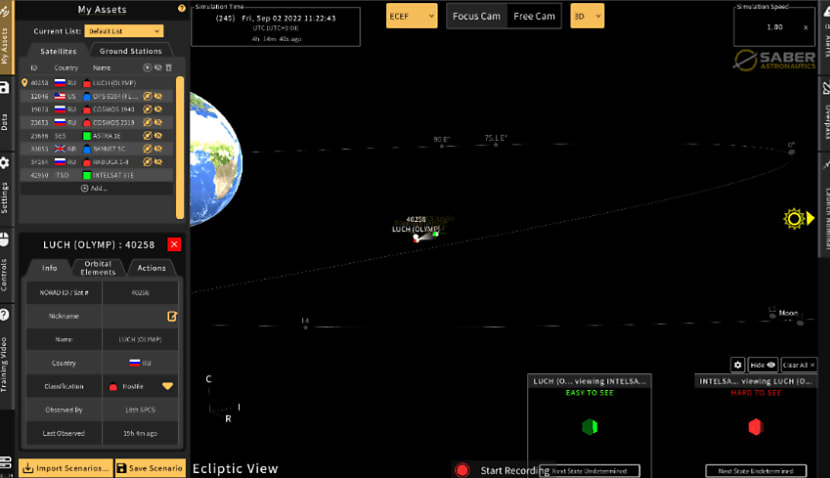The contract, known as a TACFI (Tactical Funding Increase), comes after the Australian-based Saber was awarded $1.8 million to initially develop the software in 2019.
The software, designed as a space domain awareness aid, was deployed by the USSF on several of its networks in 2020 shortly after the software’s development.
Saber’s initial funding for the Space Cockpit software came from “AFWERX”, the USSF’s very own tech incubator for space start-ups. As part of the program, Saber won a Small Business Innovation Research (SBIR) phase 2 contract to develop the software.
The software is a virtual reality space operations centre, designed to assist users to visualise the space environment in which their assets are operating.
Saber also received a phase 1 SBIR grant to develop a threat detection software named “Sentinel” in 2021. This software is designed to act as a space traffic management tool, assisting a spacecraft’s ability to analyse onboard data. Sentinel has now graduated to a phase 2 SBIR grant as of March 2022.
Sentinel has been active alongside the original version of Space Cockpit in the USSF for the past year. Until now, the two pieces of software operated independently, but one of the key upgrades slated for Space Cockpit will be the ability to integrate and support the Sentinel software.
Aside from cross-integration, Space Cockpit has also received upgrades to its algorithms for cislunar spaceflight, improvements to its spacecraft orbit observation capabilities and a new ability to execute spacecraft manoeuvres.
The close working relationship between the USSF and Saber allows the company to receive continuous feedback from operators in real time and implement changes quickly.
“Each unit has their own special needs, so we developed a framework in Space Cockpit to allow rapid changes. Embedding flexibility in the software is empowering for operators to directly impact the product they use every day,” said Saber CEO Jason Held.
According to Held, the software is proving popular within the USSF, with user numbers doubling in the last two months within the USSF.
“Space Cockpit, especially the visualisation features, are going a bit viral within the Space Force community,” he said.
Nathan Parrott, the director of Saber USA, explained the ongoing development of the software.
“Normally, the government buys software and that’s the end of it. But modern warfare, especially in space, is very dynamic. We needed the ability to update the program on the fly to respond to the rapidly evolving threat landscape.”

Liam McAneny
Liam McAneny is a journalist who has written and edited for his University International Relations journal. He graduated with a Bachelor of Arts (International Relations) and Bachelor of Laws from the University of Wollongong in 2021. He joined Momentum Media in 2022 and currently writes for SpaceConnect and Australian Aviation. Liam has a keen interest in geopolitics and international relations as well as astronomy.
Send Liam an email at: [email protected]

